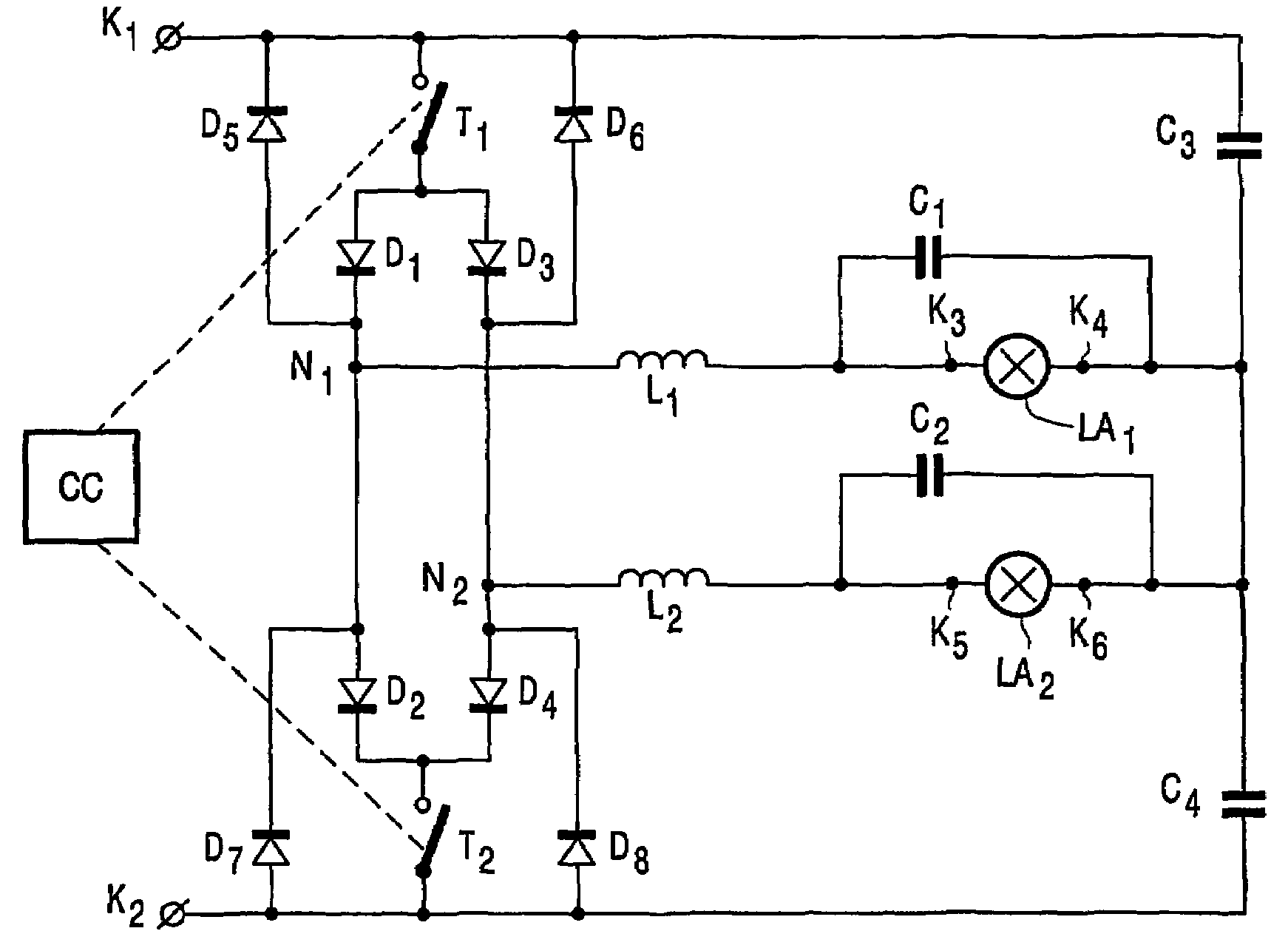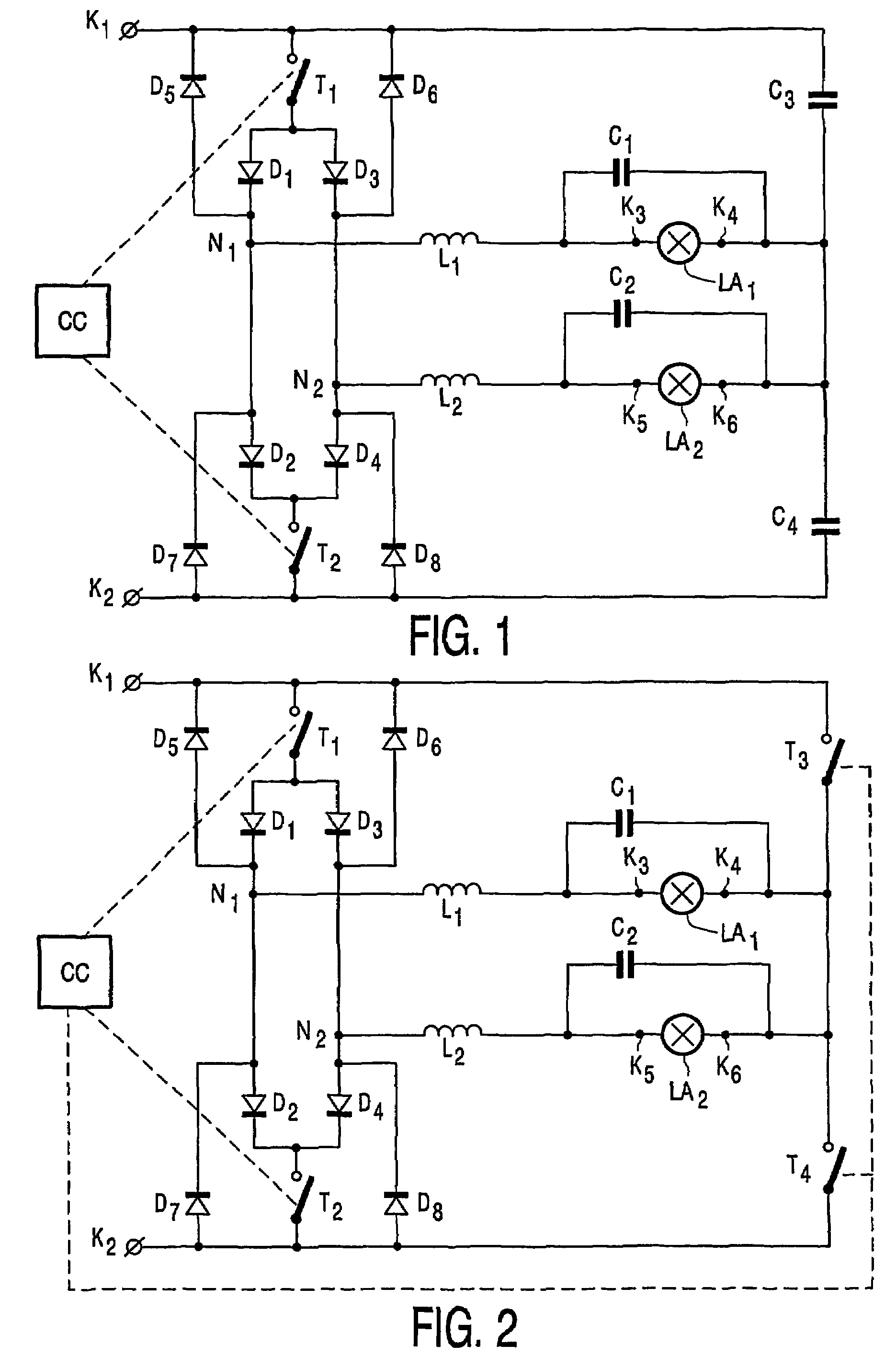Circuit arrangement for operating discharge lamps
- Summary
- Abstract
- Description
- Claims
- Application Information
AI Technical Summary
Benefits of technology
Problems solved by technology
Method used
Image
Examples
Embodiment Construction
[0024]In FIG. 1, K1 and K2 are input terminals for connection to a supply voltage source. Input terminals K1 and K2 are connected by means of a series arrangement of first switching element T1, diode D1, terminal N1, diode D2 and switching element T2. Diodes D1 and D2 respectively form a first and a second diode. Diodes D1 and D2 together with terminal N1 form a series arrangement III connecting the first and the second switching element. Series arrangement III is shunted by a series arrangement of diode D3, terminal N2 and diode D4. Diodes D3 and D4 respectively form a third and a fourth diode. Diodes D3 and D4 together with terminal N2 form a series arrangement IV connecting the first and the second switching element. The first switching element T1, the second switching element T2 and the parallel arrangement of series arrangements III and IV together form a series arrangement I. The series arrangement of diode D1 and first switching element T1 is shunted by diode D5 that forms a ...
PUM
 Login to View More
Login to View More Abstract
Description
Claims
Application Information
 Login to View More
Login to View More - R&D
- Intellectual Property
- Life Sciences
- Materials
- Tech Scout
- Unparalleled Data Quality
- Higher Quality Content
- 60% Fewer Hallucinations
Browse by: Latest US Patents, China's latest patents, Technical Efficacy Thesaurus, Application Domain, Technology Topic, Popular Technical Reports.
© 2025 PatSnap. All rights reserved.Legal|Privacy policy|Modern Slavery Act Transparency Statement|Sitemap|About US| Contact US: help@patsnap.com


